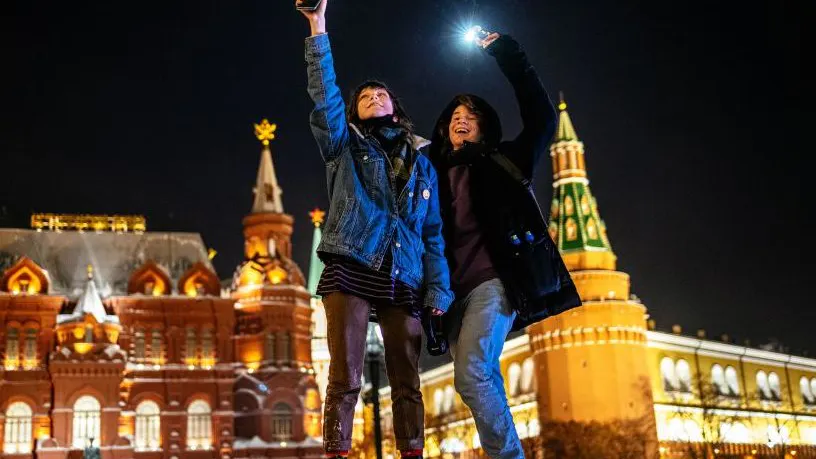Valentine’s Day saw a show of support for Russian opposition leader Alexei A. Navalny, who is currently in prison. People gathered in the courtyards of residential areas to shine the flashlights of their cellphones in a show of solidarity.
According to the Associated Press:
Navalny’s team sent photos of small groups with lit-up cellphones in cities from Siberia to the Moscow region. It was unclear how many people participated overall.
No arrests were immediately reported. However, police detained nine people at a daytime demonstration in the city of Kazan calling for the release of political prisoners, according to OVD-Info, a human rights group that monitors political arrests.
Despite the initial skepticism of supporters about the new, peaceful style of protesting, Russian officials tried to put out the demonstrations for days. Navalny’s allies were accused of following instructions from NATO, and television channels backed by the Kremlin “warned that flashlight rallies were part of major uprisings around the world.” State news services even used unnamed sources to say that a terrorist group was planning to attack unapproved large demonstrations.
Media outlets controlled by the Kremlin previously avoided discussing Navalny and reportedly only referred to him as “a blogger” the few times they did talk about him. Russian President Vladimir Putin has also never mentioned Navalny by name.
This all changed recently when Navalny was suddenly a main topic.
As reported by The Associated Press, Maria Pevchikh, head of investigations at Navalny’s Foundations for Fighting Corruption, said on state TV, “Navalny went from a person whose name is not allowed to be mentioned to the main subject of discussion.”
This was reported to be a shift in strategy by the Kremlin, and comes after Navalny’s foundation released a video alleging that a luxurious Black Sea palace had been built for Putin through corruption. The video has been viewed over 111 million times on YouTube since January 19 and was put out two days after Navalny’s globally-watched arrest.
The AP reports:
…Political analyst and former Kremlin speech writer Abbas Gallyamov says that keeping Navalny and his protests off the airwaves to deprive him of additional publicity no longer makes sense.
“The fact that this strategy has changed suggests that the pro-government television audience is somehow receiving information about Navalny’s activities through other channels, recognizes him, is interested in his work, and in this sense, keeping the silence doesn’t make any sense,” Gallyamov said.
The New York Times reported on the protests that began six days after Navalny was arrested when he arrived in Moscow from Germany, where he had spent several months returning to health after being poisoned by a “military-grade nerve agent.”
The New York Times reports:
Western officials and Mr. Navalny have described the poisoning, which took place in Siberia in August, as an assassination attempt by the Russian state. The Kremlin denies this.
After he was arrested, Navalny urged supporters to gather and protest, even though they were not granted permission to do so by authorities. Many Russians reportedly answered the call “with the most widespread demonstrations that the nation has seen since at least 2017 — numbering in the tens of thousands in Moscow and St. Petersburg and in the thousands in each of several cities to the east, including Yekaterinburg, Novosibirsk, Tomsk, Omsk and the Pacific port of Vladivostok.”
The new “flashlight rall[ies]” are a quieter, calmer type of gathering.
One of Navalny’s allies, Leonid Volkov, took to YouTube to comment on the Russian state news agencies’ loud negative reactions to Sunday’s peaceful flashlight protests, saying “the Kremlin is awfully scared of the flashlight action.”

.png)
.png)

